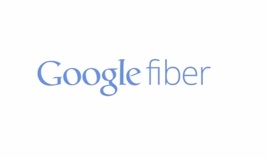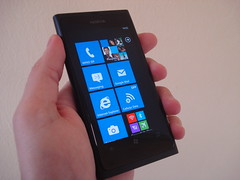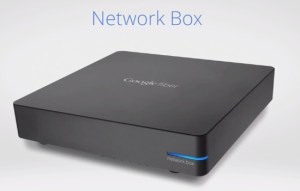Published on Jul 31, 2012 by AlJazeeraEnglish : Jury selection has begun in a court case between Apple and Samsung. The trademark dispute puts billions of dollars on the line as well as control of the future of the U.S. smartphone and tablet industry. Rob Reynolds reports from Los Angeles.
MAIN MENU MOVED TO THE BOTTOM OF THE BLOG!
Search This Blog
Tuesday, July 31, 2012
Thursday, July 26, 2012
Google Fiber took Kansas City from Mega to Giga
Will Come With TV Service, 1TB Of Cloud Storage, Nexus 7


After a few delays and setbacks, Google today officially launched its 1 gigabit residential fiber network in Kansas City. The network will deliver symmetric 1 gigabit connections to households across the city. That’s about 100 times faster than most current residential broadband connections in the U.S. There will be no monthly caps or overage charges. Google Fiber will also come with 1 terabyte of cloud storage and HD TV service. Users in Kansas City will have to pay a $300 fee to get the service installed in their houses. The monthly price for the 1 gigabit Internet connection and TV service will be $120/month. Users who just want the Internet service will have to pay $70/month.
Users who just want a basic 5 Mbps Internet connection will be able to get this for free for at least the next 7 years, as long as they pay the $300 construction fee. Google will also offer free gigabit connectivity to schools.
Sadly, though, the residents of Kansas City will stillhave to wait a bit to get these fiber cables installed in their houses. Google is currently allowing potential users to put down a $10 deposit. Google will prioritize neighborhoods based on how many households apply by early September. The company did not announce an exact date for when it plans to actually connect the first households.
During the announcement, Google’s officials stressed how the Web has changed virtually everything “for the good” over the last few years and created million of jobs. Despite all of this, though, Google says “we are at a crossroad.” We currently have lots of computing power and storage capacity (and thanks to Moore’s Law, they continue to increase quickly). Internet speeds in the U.S., however, have lagged far behind other countries. That’s despite the fact that the technology has actually evolved quickly. The choice we have today, says Google, is to get network speeds onto the same exponential growth curve or risk lagging behind and missing out.
read more
read more
Saturday, July 21, 2012
Securifi Almond review
Previous
NexCNET Editors' Ratin$79.00
The bad: The Securifi Almond's performance is just about average. You can't use the touch screen to manage all of its settings and its Web interface is also rather buggy.
The bottom line: The Securifi Almond's touch-screen novelty, while it works great, is not enough to make up for the lack of features and performance as well as the price tag.
The Securifi Almond is the first single-band router I have reviewed in a while. This is mostly because most new wireless routers, including budget ones, are now dual-band. But the Almond has a novelty of its own: it's the first compact router on the market that can be managed entirely via its touch screen. For this reason, when it was first introduced, I called it the router for the "post-PC era."
And I was right, you indeed don't need a computer, or any connected device for that matter, to get the Almond up and running and manage most of its basic settings. Almost everything can be done via its bright, easy-to-use, and responsive 2.8-inch touch screen. You do need its Web interface, which is rather buggy, for the router's advanced settings.
In my testing, the Almond proved to be a solid single-band router with stable Wi-Fi signal. The router's range was short, however. That, the buggy Web interface, and the lack of Gigabit Ethernet and IPv6 support make the router not really worth its street price of about $80; you can find other more advanced, even true dual-band, routers that cost about the same.
Still, if you're looking for compact, simple, yet very hip router for your small apparel or flower shop, the Securifi Almond will make a good investment. Otherwise, check out our list of other budget routers to find some that cost less while offering a lot more.
Design and features
The Securifi Almond doesn't look like a router at all, but rather a digital alarm clock, due to its compact size and its, well, alarm clock type of shape. On one side, it has one WAN port (to connect to an Internet source, such as a broadband modem) and two LAN por ts (for wired clients). All of these ports are regular Ethernet (10/100) and not Gigabit. This means you can't expect a fast wired network out of the router. Under these ports are a recessed reset button and the power connector.
Friday, July 20, 2012
PayPal Acquires card.io
JULY 17, 2012
I’m excited to announce that PayPal has acquired card.io, a San Francisco-based company that provides technology for developers to capture credit card information by using the camera on a smartphone.
We first met with the team at card.io when we were working on integrating their technology into the PayPal Here mobile app. While working with them, we were simply blown away by the creativity and drive of their employees. They are a passionate and independent team that likes solving large, complex problems and we wanted them to join our team. Great people make great products and great products are what make companies great. The employees at card.io will be joining the PayPal global product team in San Jose to help us create new experiences to make it even easier for consumers and merchants to use the PayPal digital wallet. The current card.io technology will remain available to developers for use in their own applications.
The card.io team is joining PayPal for the same reasons that the Zong team was excited to join PayPal last year - to get the opportunity to work on projects that will accelerate innovation at a scale that’s just not possible at a startup.
We can’t wait to get them involved in helping us change the future of shopping and payments.
–Hill Ferguson, Vice President of Global Product, PayPal [original report]
Introducing card.io
Will Google Become a Major Player in the Hardware Space?
Published on Jul 16, 2012 by ForaTv : Marissa Mayer, vice president of location and local services at Google, discusses the search leader's transition into the hardware marketplace.
Monday, July 16, 2012
ACLU Releases App That Lets You Police the Police
Published on Jul 5, 2012 by mashable : The ACLU of New Jersey released an app on Wednesday that transforms your phone into a stealth audio-visual recorder. It's called Police Tape, and it's aimed at bring your on hand monitor for inappropriate police action.
Nokia sleeps before it's dead

Nokia Lumia 800 (Photo credit:John.Karakatsanis)
Before we have even polished off the bottle of whisky needed after listening to RIM's painful figures, Nokia is heading our way with its second quarter results, due on Thursday.
I would normally wait until results day before shedding a tear for what was once a great company, much like RIM, but with the news today it is slashing the price of its flagship phone - the Nokia Lumia 900 - to just $49.99 (£32) we all know there cannot be good news coming our way.
The Finnish mobile manufacturer has struggled in the past few years due to the growing competition of smartphones from faster and sleeker developers at the likes of Apple, as well as missing the boat of adopting Android, whilst all the smaller guys grew from the partnership - again, much like RIM.
It lost its spot as the largest mobile manufacturer to Samsung, had cut 10,000 jobs and pledge €1 billion for on-going restructuring - if I say much like RIM any more times...
Wednesday, July 11, 2012
The Best $100 Bluetooth Speaker

Dragging party music to the park or patio doesn't have to involve so much actual dragging. More party, more easy! You've got a gazillion songs on your phone already. And little, portable Bluetooth speakers are getting so cheap. Now, for $100, you can blast your jams to high heaven—or, at least, a 10-meter radius—without any hassles.
Testing Methodology
We tested four Bluetooth speakers, listed at less than $100, to find out which one packs the perfect combination of portability, sound quality, and volume. Basically, these speakers should deliver easy wireless audio to go. So their mobility matters.
Beaming audio over Bluetooth involves an inherent sacrifice in audio quality. And, chances are, this little speaker isn't going to be your primary sound system. So rather than expecting it to deliver perfect sound, it was more critical to measure whether you could hear the speaker over gusty wind, the din of traffic, or the noise of a nearby soccer game.
Most phones and computers now support A2DP Bluetooth streaming. And pairing isn't the disaster it was a few years ago. So we tested each speaker to make sure they'd play nicely with an iPhone, a MacBook, and a Samsung Galaxy Nexus. Bonus points for any additional features.
Subscribe to:
Posts (Atom)




